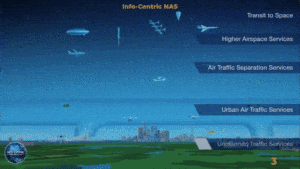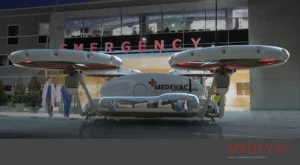
Such contradictions, although inherent to this fascinating field, are not without their implications. On one hand, the rigorous precision and elaborate lexicon reflect the intricate world of spacecrafts, propulsion systems, and orbital mechanics – elements that embody the very essence of aerospace engineering. On the other hand, this obscurity presents a formidable barrier, distancing the field from the general public and even other professionals within the engineering realm.
As the lines between disciplines blur in our increasingly interconnected world, the necessity for clear, accessible communication becomes paramount. Yet, in aerospace engineering, we find a resistance – an insistence on upholding a language that, while precise, remains indecipherable to many. This paradox, the struggle between the preservation of technical integrity and the desire for widespread understanding, fuels a provocative debate.
Is it possible, or even necessary, to demystify the realm of aerospace engineering? Can we retain the scientific rigor while fostering an environment that encourages broader participation and comprehension? This article will explore these questions, delving into the intricate labyrinth of aerospace dialogue with a clear mission: to unravel the reasons why clarity matters in nurturing an inclusive and innovative aerospace ecosystem. The journey from the depths of technical jargon to the heights of accessible knowledge is set to begin. Are you ready for launch?
Understanding the Aerospace Ecosystem
The aerospace ecosystem, mirroring the boundless sky it aims to conquer, is as vast as it is varied. It is a complex web of interconnections, with different elements orbiting each other in a carefully choreographed ballet of precision and performance. Here, we find not only aerospace engineers, but an array of diverse entities – project managers, suppliers, customers, regulators, and more – each playing a crucial part in this celestial symphony.
First, let’s look at the aerospace engineers, the core architects of our journey into the stars. These individuals grapple with formidable challenges, from designing spacecrafts capable of withstanding the harsh conditions of outer space to developing propulsion systems that can defy the Earth’s gravity. Their language is one of equations and schematics, codes, and simulations, a technical lexicon reflecting the intricate nature of their work.
Project managers, on the other hand, are the maestros coordinating this grand performance. Their focus spans beyond the immediate technicalities, encompassing resource allocation, risk management, timeline adherence, and team coordination. They form a vital bridge between the engineers and the wider world, translating complex technical plans into comprehensive strategies.
Suppliers and manufacturers, too, are part of this ecosystem. They transform blueprints into tangible entities, shaping metals and materials into spacecrafts and components that can survive and function in the extraterrestrial expanse. Their understanding of the engineer’s language must be as precise as the parts they produce.
The audience of the aerospace concert extends further, incorporating customers, who may range from governments and satellite communication providers to commercial spaceflight companies, and the regulators who ensure all actions align with international space law and safety standards. For these groups, understanding the dialogues happening within the aerospace industry can be a daunting task, given the heavy usage of technical language.
Indeed, communication in the aerospace industry takes many forms: intricate reports teeming with data, presentations laden with complex diagrams, meetings bubbling with technical jargon, and even casual conversations peppered with industry-specific terms. Each of these communications must be as precise as the engineering itself. But with such a diverse audience, this ecosystem must also ensure that its language is as clear as the night sky they aim to explore. How, then, does the aerospace industry balance these conflicting needs? The quest for answers continues as we delve deeper into this starlit odyssey.
The Role of Clear Communication in Aerospace Engineering
In an arena where a single misinterpretation can escalate into an interstellar disaster, the role of clear communication in aerospace engineering cannot be overstated. It serves not only as a vital lifeline threading through the fabric of the aerospace ecosystem, but also as a catalyst for innovation, efficiency, and collaboration.
To fully appreciate the impact of clear communication, we must first acknowledge that aerospace engineering is fundamentally a team endeavor. It brings together a rich tapestry of minds from various backgrounds – physicists, mathematicians, engineers, project managers, and even psychologists. Each professional brings to the table a unique perspective, contributing towards the collective goal of advancing our celestial capabilities. However, this multidisciplinary convergence can only thrive in an environment where ideas are clearly articulated, where technicalities are translated into shared understanding, and where complex concepts are navigated with precision and clarity. In this sense, clear communication becomes the driving force that propels the aerospace team towards success.
To put this into perspective, let us explore real-world instances where clear communication has acted as a critical success factor in aerospace missions. The Mars Rover missions, for example, have relied heavily on detailed yet understandable communication among scientists, engineers, project managers, and a multitude of other stakeholders. Distilling complex scientific goals into executable engineering plans, relaying operational instructions across millions of miles, sharing mission updates with the public – all these demanded a high level of clarity in communication. The success of these missions stands testament to how clarity can transform high-stakes visions into victorious realities.
In stark contrast, history also recounts chilling tales of aerospace missions that suffered due to communication breakdowns. The tragic Space Shuttle Challenger disaster serves as a poignant reminder. In this case, critical information about the O-rings’ vulnerability in cold temperatures was not effectively communicated to decision-makers, leading to disastrous consequences.
Therefore, the role of clear communication in aerospace engineering is twofold – it not only enables successful collaborations and ground-breaking innovations, but it also serves as a safeguard against catastrophic failures. It is in this context that we will next explore the challenges of achieving clarity in engineering dialogues and the strategies that can help overcome these hurdles. The cosmic journey of unraveling the significance of clear communication in aerospace engineering continues
The Challenges of Achieving Clarity in Engineering Dialogues
Navigating the labyrinth of aerospace engineering communication can sometimes feel like traversing a meteor shower – fraught with pitfalls and brimming with complexities. Several challenges persistently obstruct the path to clarity in engineering dialogues.
First and foremost is the technical language inherent to the field. Aerospace engineering thrives on precision, often necessitating a vernacular dense with jargon and technical terms. While this language ensures accuracy among peers, it can be intimidating and exclusionary to those outside the immediate field, such as project managers, stakeholders, and the wider public.
Further complications arise when we consider the diverse audience within the aerospace ecosystem. A message that resonates with an engineer might sound like an alien dialect to a regulator or a customer. Tailoring communication to suit different audience needs without compromising on technical integrity is a delicate balance to strike.
Another challenge lies in the sheer volume of information that flows within the aerospace sector. In an industry where details can determine success or failure, it’s not unusual for communications to be brimming with data and specifics. However, this information overload can be overwhelming, increasing the risk of misinterpretation or omission of critical details.
To illustrate, let’s consider a scenario of an engineer communicating a design change in a spacecraft component. The communication needs to be technically accurate, detailing the change in specifications, its impact on the overall system, and potential risks. But if this information is conveyed in highly technical terms, it may be indecipherable to non-engineering stakeholders. If it’s filled with too much data, the key points might be lost. This could lead to confusion, delays, or even wrong decisions, adversely affecting the project’s progress and outcome.
These challenges are not insurmountable, but they do necessitate thoughtful strategies to promote clear communication. The aerospace sector must recognize that the beauty of their celestial symphony lies not just in the notes (the technical details), but also in the pauses (the clarity and simplicity) between them. As we transition to the next section, we will delve into how the aerospace industry can fine-tune its composition, achieving a perfect harmony between technical complexity and communicative clarity.
Strategies for Clear Communication in Aerospace Engineering
Achieving clarity in communication within the intricate world of aerospace engineering is akin to plotting a successful course through the cosmos – it requires precise planning, strategic execution, and a willingness to adapt. Here are some strategies that can help illuminate the path.
- Simplify without Compromise: Simplifying complex aerospace engineering concepts does not imply a reduction in accuracy. It’s about distilling information to its essence, using plain language where possible, and explaining terms instead of assuming familiarity. This strategy is about recognizing that the power of communication lies in understanding, not just in the transmission of information.
- Know Your Audience: Understanding who you’re communicating with is key to tailoring your message effectively. What works for a team of engineers may not work for project managers or clients. Adjusting the level of detail, complexity, and jargon based on the audience’s knowledge base can significantly enhance clarity.
- Use Visual Aids: Sometimes, words can fall short in conveying complex aerospace concepts. In such cases, visual aids like diagrams, graphs, and even virtual or augmented reality platforms can make a significant difference. A well-designed visual can often communicate intricate details more effectively than a page full of text.
- Utilize Technology: In this digital age, numerous tools and platforms can help improve communication. Collaboration tools can streamline the exchange of ideas, project management software can keep everyone on the same page, and machine learning algorithms can even help simplify technical documents.
- Encourage Feedback: Establish an environment where feedback is encouraged. If something is unclear, teams should feel comfortable asking for clarification. This two-way communication can help ensure that all team members understand the objectives clearly, reducing the chance of misinterpretation or errors.
- Invest in Training: Lastly, remember that effective communication is a skill that can be developed. Regular training sessions to enhance communication skills, workshops on technical writing, and seminars on presentation skills can all contribute to better, clearer communication within the aerospace ecosystem.
While these strategies can act as guiding stars, it’s essential to remember that each situation might require a unique approach. Clear communication in aerospace engineering isn’t a checkbox item; it’s an ongoing process, a constant endeavor to ensure that the path to the stars is as unobstructed as possible. As we sail towards the final section of this exploration, let’s ponder how the future of communication in aerospace might unfold.
The Future of Communication in Aerospace Engineering
As we gaze into the nebulous expanse of the future, it is evident that the need for clear communication in aerospace engineering will only intensify. With new frontiers being explored, novel technologies being developed, and the field becoming more interdisciplinary, the aerospace ecosystem must evolve its communication strategies to match the growing complexity.
On the horizon, we see several trends that might shape the future of communication in aerospace engineering.
- Increasing Public Engagement: With the rise of commercial spaceflight and satellite technology, the general public’s engagement with aerospace engineering is set to soar. To cater to this growing interest, the sector will need to develop more accessible, jargon-free communication methods. The future may see more ‘science communicators’ within aerospace, whose job is to translate the technical lingo into language the public can understand and appreciate.
- AI-powered Communication Tools: The advent of AI has already begun transforming various sectors, and aerospace communication is no exception. Future AI tools could automatically translate complex technical documents into simpler language or customize information to suit the understanding level of different audiences. These tools might also help manage the enormous volume of information, ensuring key points are highlighted and not lost in the data deluge.
- Virtual and Augmented Reality: As VR and AR technologies become more sophisticated, they may play a significant role in aerospace communication. They could be used to explain complex concepts, demonstrate spacecraft designs, simulate mission scenarios, and even train professionals in communication skills.
- Multidisciplinary Collaboration: As aerospace projects become more complex, they will require the integration of diverse disciplines, from data scientists and AI specialists to climate scientists and psychologists. This, in turn, will necessitate a new level of clarity in communication to ensure seamless collaboration and understanding across fields.
While we can’t predict the future with certainty, it’s clear that the demand for effective, clear communication in aerospace engineering will only continue to rise. As we journey further into the unknown, the ability to express complex ideas clearly will remain a vital tool – a North Star guiding us through the complexities of our interstellar ambitions.
In this odyssey from jargon to clarity, from confusion to understanding, let’s remember that aerospace engineering is not just about reaching new heights in space. It is also about reaching new heights in communication, where every stakeholder, from the seasoned engineer to the layperson, can appreciate the celestial symphony that is aerospace engineering. After all, the journey to the stars should be a shared adventure, one where clarity of dialogue lights up the path for us all.
The Power of Clarity
The real-world collaboration between KAIA and the FD CDM serves as an inspiring testament to the power of clear communication in aerospace engineering. KAIA’s mission was complex: transform intricate technical information into a captivating and accessible presentation for engineers and program managers. Through a storytelling framework and the strategic use of dynamic visuals, KAIA turned this challenge into a triumphant success, echoing our discussions on simplifying without compromising and the value of visual aids. The outcome? A product that not only met expectations but exceeded them, proving that clarity in communication can indeed transform aerospace dialogues.
So here lies our challenge to you, the reader. It’s time to put these insights into action. The path to clear communication in aerospace engineering may seem daunting, but as KAIA demonstrated, it’s one worth treading. Let’s illuminate the path together. Because when we triumph, it’s more than just a project’s success—it’s a leap towards a universe of understanding.
Engineers are the masters at solving problems and pushing the boundaries of what’s possible in aerospace. The problem is showcasing the potential of these breakthroughs to the wider audience. Having delivered hundreds of explainer videos, technical presentations, and engaging websites, KAIA’s proven methodology will bring your projects to light in the most compelling way, underlining their real-world benefits. KAIA will reduce risk by ensuring your groundbreaking innovations get the recognition they deserve.
We invite you to take the next step and explore how clear communication can elevate your work. When you’re ready, schedule a strategy session with us. Let’s embark on this journey of discovery together, amplifying the reach and understanding of your valuable contributions to aerospace.






